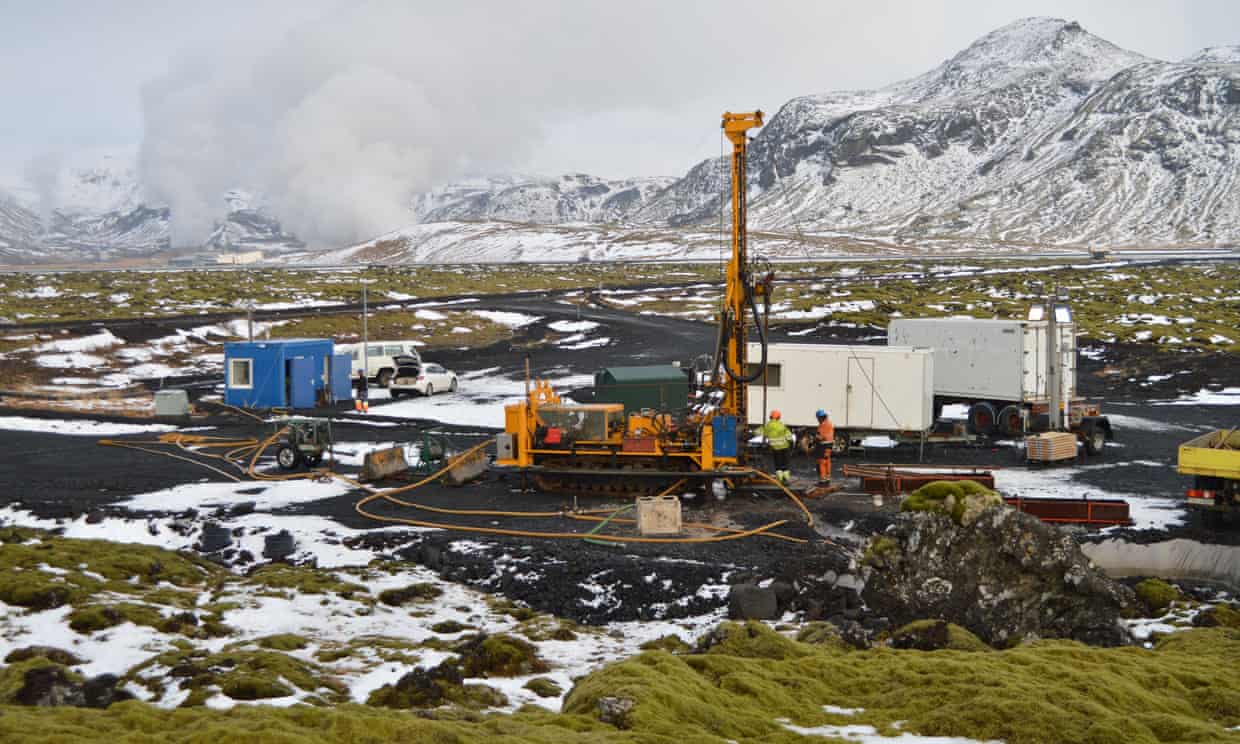Radical new technique promises a cheaper and more secure method of burying CO2 emissions underground instead of storing it as a gas
 |
| Site close to the Hellisheidi geothermal powerplant, where CO2 was injected into volcanic rock. In two years it was almost completely mineralised. Photograph: Juerg Matter/Science |
Carbon dioxide has been pumped underground and turned rapidly into stone, demonstrating a radical new way to tackle climate change.
The unique project promises a cheaper and more secure way of burying CO2 from fossil fuel burning underground, where it cannot warm the planet. Such carbon capture and storage (CCS) is thought to be essential to halting global warming, but existing projects store the CO2 as a gas and concerns about costs and potential leakage have halted some plans.
The new research pumped CO2 into the volcanic rock under Iceland and sped up a natural process where the basalts react with the gas to form carbonate minerals, which make up limestone. The researchers were amazed by how fast all the gas turned into a solid – just two years, compared to the hundreds or thousands of years that had been predicted.
“We need to deal with rising carbon emissions and this is the ultimate permanent storage – turn them back to stone,” said Juerg Matter, at the University of Southampton in the UK, who led the research published on Thursday in the journal Science.
"In our pilot project in Iceland, called CarbFix, we take CO2 and wastewater from the same geothermal power plant and inject them together. The CO2 dissolves and, like in a bottle of sparkling water, it stays dissolved as long as it's sealed. It then reacts with calcium and magnesium silicates in rocks to form carbonates.
For CarbFix the electricity comes from geothermal power, so the emissions penalty for injecting dissolved CO2 is on the order of 0.2 percent. With electricity from a coal-fired power plant, the penalty would be much higher, over 10 percent of the volume stored."